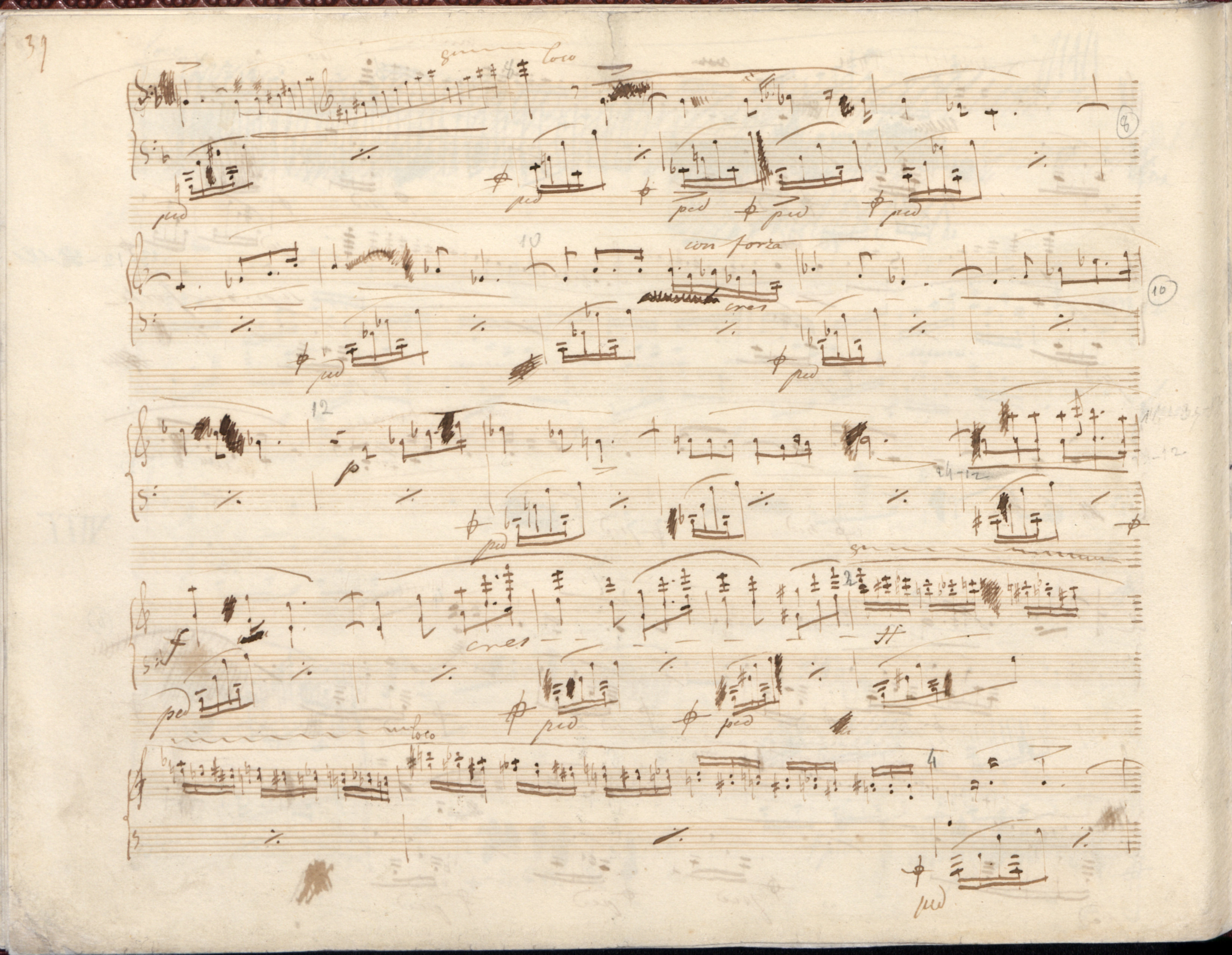Op. 2, Variations in B♭ major
Op. 10, 12 Etudes
Op. 11, Concerto in E minor
Op. 21, Concerto in F minor
Op. 22, Polonaise in E♭ major
Op. 24, 4 Mazurkas
Op. 25, 12 Etudes
Op. 26, 2 Polonaises
Op. 27, 2 Nocturnes
Op. 28, 24 Preludes
Op. 30, 4 Mazurkas
Op. 35, Sonata in B♭ minor
Op. 50, 3 Mazurkas
Op. 63, 3 Mazurkas
Op. 64, 3 Waltzes
(Op. 4), Sonata in C minor




Op. 28 No. 24, Prelude in D minor
The evenly spaced three notes in the 2nd half of b. 44, 46, 48, 50, 52 and 53 suggest that they were initially supposed to be quavers; the last one was changed to a semiquaver already in the written text. The gaps themselves are a foundation too fragile for such a conclusion; however, one can indicate a few other arguments in favour thereof:
- the absence of this phenomenon in the first part of the Prelude – prior to b. 40, in all dotted rhythms the gaps between the notes reflect the proportions of rhythmic values;
- the last note having been definitely shortened from quaver to semiquaver in b. 38;
- notation in b. 40, in which the correction is evidenced both by the gaps (greater between the 1st and 2nd notes than between the 2nd and 3rd) and the semiquaver beam (added too low and clumsily);
- clearly darker shade of the semiquaver beams in b. 52-53, which indicates that they were added later.
Compare the passage in the sources »
category imprint: Corrections & alterations; Source & stylistic information
issues: Corrections in A, Main-line changes, Dotted or even rhythm
notation: Rhythm

